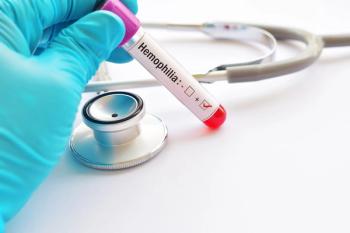
Delivery mode, diet influence infants’ intestinal microbiome
Both mode of delivery and feeding method are significantly associated with intestinal microbial community composition, according to a study in 102 full-term infants, whose gut microbiota investigators analyzed using stool samples taken at the age of 6 weeks.
Both mode of delivery and feeding method are significantly associated with intestinal microbial community composition, according to a study in 102 full-term infants, whose gut microbiota investigators analyzed using stool samples taken at the age of 6 weeks. Included in the study were 70 infants who were delivered vaginally and 32 born by cesarean delivery. In the first 6 weeks of their lives, 70 infants were exclusively breastfed, 26 received combination feeding, and 6 were exclusively formula fed.
Delivery mode was especially strongly associated with infant gut microbiome composition. Compared with cesarean delivery, vaginal birth was associated with increased abundance at 6 weeks of Bacteroides and Pectobacterium and with decreased quantities of Staphylococcus, Rothia, and Propionibacterium. Exclusive breastfeeding was associated with a microbiome community distinct from that of infants who were either exclusively formula fed or given a combination of breast milk and formula, but little difference was seen between infants who consumed a combination of breast milk and formula and those fed formula exclusively. And, importantly, bacterial communities associated with combination feeding were more similar to those associated with exclusive formula feeding than with exclusive breastfeeding.
Ten genera represented more than 90% of the organisms investigators identified, primarily Bacteroides and Bifidobacterium, followed by Streptococcus, Clostridium, Enterococcus, Blautia, Veillonella, Lactobacillus, Staphylococcus, and Planococcus (
Commentary We are learning that many things we do in caring for newborns and children have an effect on the microbiome. Meanwhile, we continue to learn more about how the bacteria that live on and in us determine all sorts of health issues in childhood and adulthood. Watch for a wave of studies on the role of the microbiome on immediate and long-term health. -Michael G Burke, MD
Ms Freedman is a freelance medical editor and writer in New Jersey. Dr Burke, section editor for Journal Club, is chairman of the Department of Pediatrics at Saint Agnes Hospital, Baltimore, Maryland. The editors have nothing to disclose in regard to affiliations with or financial interests in any organizations that may have an interest in any part of this article.
Newsletter
Access practical, evidence-based guidance to support better care for our youngest patients. Join our email list for the latest clinical updates.











